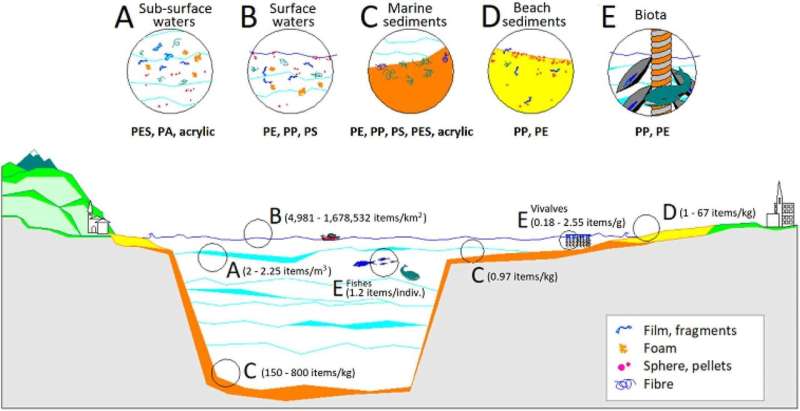Half of water and sediment samples from Bay of Biscay contain microplastics

The scientific journal Marine Pollution Bulletin has just published "Microplastics in the Bay of Biscay: an overview," a piece of work by the Materials+Technologies research group (GMT) of the Faculty of Engineering—Gipuzkoa. It is the first scientific paper that analyzes all the research studies conducted until now about the presence of microplastics in the Bay of Biscay. It includes the results obtained in various marine compartments (water bodies, marine sediments and biota) highlighting the limitations and challenges to knowledge that have been found.
Microplastics constitute an environmental problem of growing concern, and various studies have identified the Bay of Biscay as an area where marine litter builds up. The research that has now been published establishes considerable variability in the spatial and temporal distribution of microplastics confirming their presence in over 50% of the water and sediment samples collected for analysis purposes.
These are plastic particles measuring less than 5mm that are deposited in the seas and on the coasts as a result of the dumping of small-sized plastics used in certain products and applications (known as primary microplastics) or as a result of the breaking up of larger objects (secondary microplastics). Owing to the abundance of these particles in the marine environment, their origin, presence and influence on human health and species worldwide is being extensively investigated right now.
In terms of their nature, the polymers most found are polypropylene, polyethylene, polyester and polystyrene, which tally with the main plastics used worldwide. "The predominance of fragments and fibers in the results of the studies suggests that the microplastics in this region originate mainly from the breaking up of larger objects. However, the difficulty in comparing the various pieces of research owing to the different methodologies used in them is evident, so consensus needs to be reached on standardized methods for monitoring microplastics in the marine environment," said the research group responsible for the study.
More information: Amaia Mendoza et al. Microplastics in the Bay of Biscay: An overview, Marine Pollution Bulletin (2020). DOI: 10.1016/j.marpolbul.2020.110996
Journal information: Marine Pollution Bulletin
Provided by University of the Basque Country





















